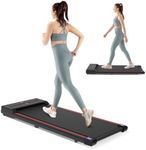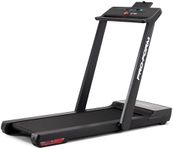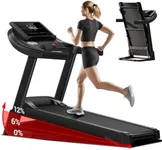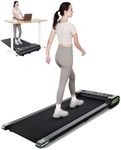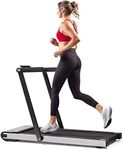Buying Guide for the Best Inexpensive Treadmills
Choosing an inexpensive treadmill can be a smart way to bring fitness into your home without spending a lot. The key is to focus on the features that matter most for your needs, rather than getting distracted by fancy extras. Think about how often you plan to use the treadmill, what kind of workouts you enjoy, and the space you have available. By understanding the main specifications, you can find a treadmill that fits your lifestyle and helps you stay active.Motor PowerMotor power, usually measured in horsepower (HP), determines how smoothly and efficiently the treadmill runs. A higher HP means the treadmill can handle heavier use and higher speeds. For walking, a lower HP (around 1.5 to 2.0) is usually enough, while jogging or running may require 2.0 HP or more. If you plan to use the treadmill mostly for walking, you can choose a lower HP, but if you want to jog or run regularly, look for a higher HP to ensure durability and a smoother experience.
Running Surface SizeThe running surface, or belt size, affects how comfortable and safe your workouts will be. A longer and wider belt gives you more room to move, which is especially important for taller users or those with a longer stride. For walking, a shorter and narrower belt may be fine, but for running, look for a belt that is at least 50 inches long and 16 inches wide. Consider your height and how you plan to use the treadmill to pick the right size for you.
Weight CapacityWeight capacity tells you the maximum user weight the treadmill can safely support. It's important to choose a treadmill with a weight limit that is higher than your own weight to ensure safety and longevity. Treadmills with higher weight capacities are generally more stable and durable. Always check this spec and pick a treadmill that comfortably supports your weight.
Speed RangeThe speed range shows how fast the treadmill can go. If you only plan to walk, a maximum speed of 6-8 mph is usually enough. For jogging or running, look for a treadmill that can reach at least 10 mph. Think about your fitness goals and typical workout intensity to decide what speed range you need.
Incline OptionsIncline settings let you adjust the slope of the treadmill, making your workouts more challenging and helping you burn more calories. Some inexpensive treadmills have manual incline, which means you have to adjust it yourself, while others may have no incline at all. If you want to add variety and intensity to your workouts, look for a treadmill with at least a few incline levels. If you’re just starting out or prefer flat walking, incline may not be as important.
Foldability and StorageFoldability refers to whether the treadmill can be folded up for storage. This is especially important if you have limited space at home. Some treadmills fold up easily and can be rolled away, while others are more stationary. If you need to save space, look for a treadmill that is easy to fold and move.
Display and ControlsThe display shows important workout information like time, speed, distance, and calories burned. Simple displays are easier to use and less likely to break. Think about what information you want to see during your workout and choose a treadmill with a display that meets your needs. Easy-to-use controls are also important for adjusting speed and incline quickly.




